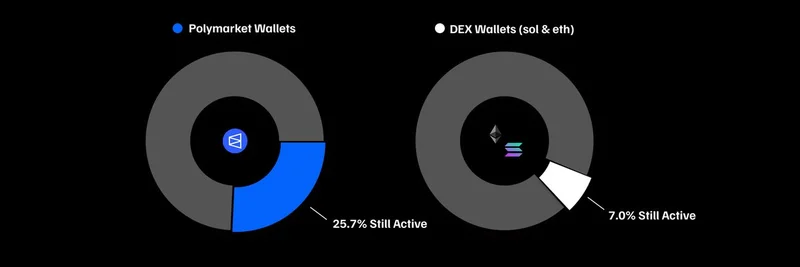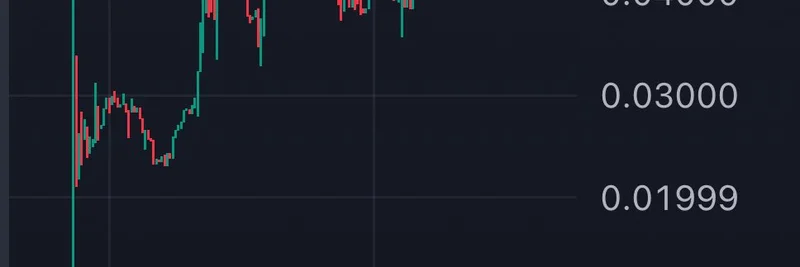In the fast-paced world of crypto, keeping users engaged long-term is like finding a diamond in a haystack. But a recent tweet from Adam at Counterparty Research highlights something remarkable about prediction markets. During the 2024 U.S. election hype, around 394,000 wallets jumped into trading on Polymarket. Fast forward a year, and an impressive 26% of those wallets are still active. That's nuts, especially when you stack it up against decentralized exchanges (DEXs) on Solana and Ethereum, where only 7% of wallets from October/November 2024 remain active today.
This data comes straight from a Dune Analytics dashboard curated by Counterparty, shedding light on user behavior in these ecosystems. For context, Polymarket is a decentralized prediction market platform where people bet on real-world events like elections, sports, or even pop culture outcomes using crypto. It's built on blockchain tech, making it transparent and tamper-proof. On the flip side, DEXs like Uniswap on Ethereum or Raydium on Solana are go-to spots for swapping tokens, including the wild world of meme coins.
Why the Huge Gap in Retention?
Digging into why prediction markets like Polymarket boast such high stickiness, it boils down to user intent. Many folks diving into Polymarket during the election weren't just chasing quick flips; they were engaging in informed speculation on events they cared about. This creates a more loyal base—think of it as sports betting fans who keep coming back for the thrill and strategy, not just the gamble.
Contrast that with DEX trading, especially in the meme token space. Meme coins, those viral, community-driven tokens often inspired by internet jokes or trends, thrive on hype and speculation. Traders frequently create "burner" wallets—temporary addresses used for a single trade or to snag a hot launch on platforms like Pump.fun. Once the pump fizzles or they cash out, those wallets go dormant. Replies to Adam's tweet echo this: one user mentioned cycling through hundreds of wallets for DEX trades but sticking with a few main ones. Another pointed out that memes encourage disposable wallets to avoid risks like hacks or tracking.
This churn is amplified on chains like Solana, known for low fees and lightning-fast transactions, making it a playground for meme token launches. Ethereum, while more established, sees similar patterns with its DeFi ecosystem. The result? A retention rate that's a fraction of Polymarket's, signaling a more transient user base driven by short-term gains.
Implications for Meme Token Enthusiasts
For those of us knee-deep in meme tokens at Meme Insider, this retention disparity is a wake-up call. High turnover on DEXs means the meme economy is volatile, with projects needing constant innovation to keep communities engaged. But it also highlights opportunities: building meme tokens with real utility, like integrating prediction elements or gamified features, could boost long-term holder loyalty.
Imagine a meme coin tied to ongoing events or predictions—something that encourages repeated interactions beyond just trading. Platforms blending memes with prediction markets might emerge as the next big thing, retaining users who see value beyond the hype.
If you're a blockchain practitioner eyeing meme tokens, focus on metrics like active wallet counts over time. Tools like Dune Analytics can help track these trends, giving you an edge in spotting sustainable projects amid the noise.
Adam's insight, shared on X (formerly Twitter), sparked discussions that underline the evolving nature of crypto engagement. As the space matures, retention could become the new king metric, separating fleeting fads from enduring ecosystems.
Stay tuned to Meme Insider for more breakdowns on how these trends shape the meme token landscape. Whether you're trading, building, or just observing, understanding user behavior is key to navigating this wild ride.



